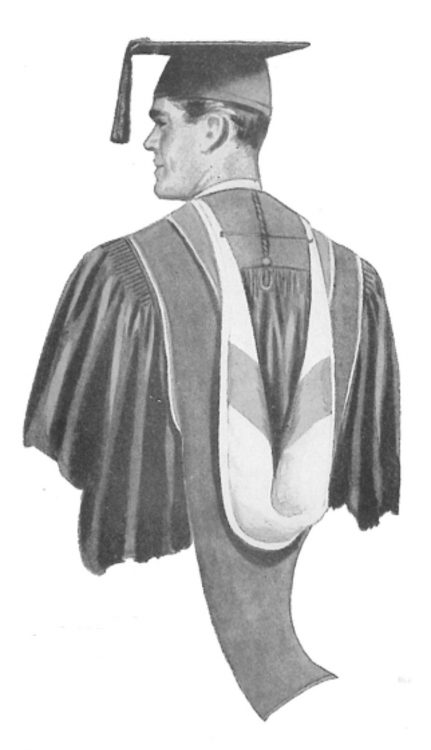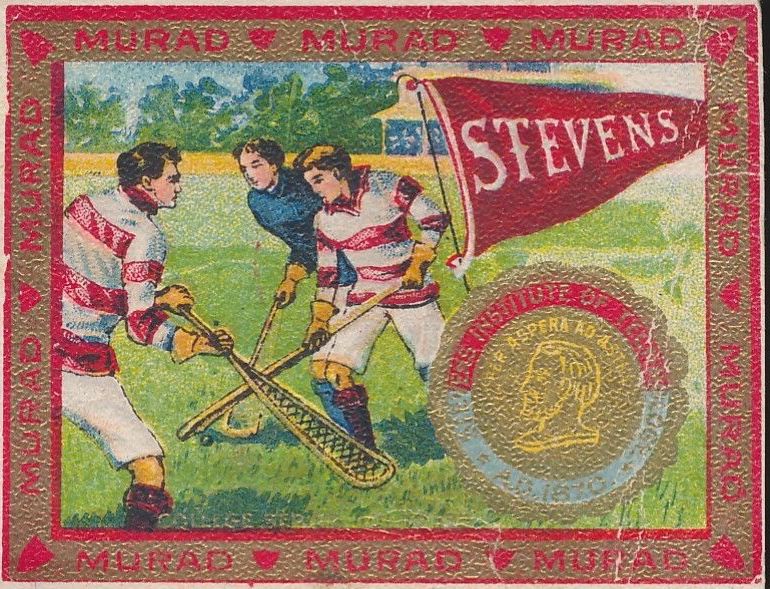Stevens Institute of Technology
New Jersey
1870




No information has been found about the origin of the silver gray and cardinal colors for Stevens Institute of Technology. But Illinois Institute of Technology, Massachusetts Institute of Technology, Stevens Institute of Technology, and Worcester Polytechnic Institute all used combinations of red and gray school colors.
Citations in the World Almanac (listed by cover date; color information is from the previous year): silver gray/cardinal (1895); silver gray/crimson (1896); silver gray/cardinal (1897); silver gray/crimson (1900-1902); silver gray/cardinal (1904-1913); cardinal/gray (1914); red/gray (1915); gray/cardinal (1916-1918); silver gray/cardinal (1923-1931); red/gray (1934-1935)


After the Intercollegiate Code of Academic Costume was written in 1895, Stevens Institute of Technology conferred honorary doctorates in 1896, 1900, and 1904, and 1905, and students began wearing caps and gowns at commencement exercises at some point before 1908. It is likely that some, or all, of these honorary doctorates were conferred with a hood, which suggests that the Intercollegiate Bureau of Academic Costume (IBAC) assigned the institute an official hood lining at some point during the 1896-1905 period.
The official Intercollegiate Bureau academic hood lining design for Stevens was first cited in a 1918 Encyclopedia Americana article on academic costume written by Gardner Cotrell Leonard, the Director of the IBAC. Leonard stated that the institute had been assigned a hood lining that was gray with a scarlet chevron. By 1927, however, the IBAC had more specifically described the institute’s hood lining as “steel gray”, which indicated a medium shade of gray.
However, one should note that according to the World Almanac, the shade of gray most often used at Stevens until the 1930s was a “silver gray” (which is a light gray color) and that the institute’s red shade was most often cardinal, not scarlet. This suggests that the gray sample the Stevens Institute sent to the IBAC must have been darker than the official “silver gray” school color, and the red sample must have been brighter and lighter than the official “cardinal” school color. Here the official color shades of the institute during the 1890s and early 1900s have been used: silver gray and cardinal.